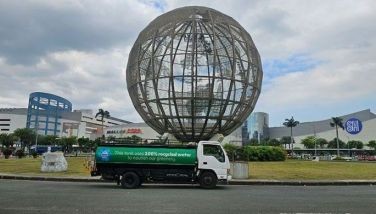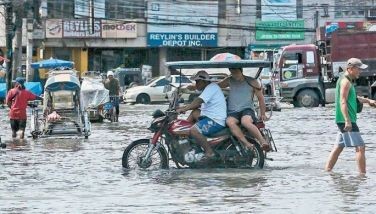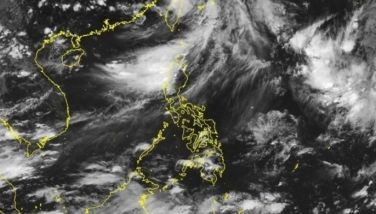Endless

Today fuel prices surge. Every Filipino will feel the pain this brings.
The past few days, every cab driver I rode with has become conversant on global affairs. They are tracking events in the Middle East and wondering when the war there will end. They understand that the longer the fighting continues, the greater the pain the rest of the world will bear.
I share their hopes that the war will be brief and the pain short-lived. But those hopes could be unfounded. This conflict will likely carry on longer and the space for diplomacy has become smaller after the US entered the fray by bombing Iranian nuclear facilities.
Iran, although militarily weakened by Israeli attacks the past week, will surely retaliate. The indications are that the Iranians will choke the Strait of Hormuz and possibly strike at US bases in the vicinity. They could activate their networks to mount cyberattacks directed principally at US targets. The Iranian missile force appears to have been underestimated as Tehran sustains its bombardment of Israel.
An effective blockade of the Strait of Hormuz is the nightmare scenario for the global economy. At least a fifth of global oil supplies transits through this narrow waterway. This will produce supply problems and cause speculative pricing for a crucial commodity.
Iran could attempt to choke sea traffic at Hormuz by unleashing the hundreds of missile-capable boats upon commercial shipping. This will draw US naval forces into direct engagement in the effort to protect shipping. Apart from the two carrier strike forces deployed by the US, the UK has also deployed warships to the area.
The Houthis in Yemen could complicate the threat on civilian shipping. They are likely to mount attacks at the Red Sea, affecting maritime traffic going through the Suez Canal. This will adversely affect supply chains beyond oil.
It is imperative for Iran to widen the theater of war. Tehran fears failure to retaliate in a substantial manner will be interpreted as a sign of weakness.
When Donald Trump decided to bomb Iranian nuclear facilities, he was hoping for a short-lived, headline-grabbing engagement. He has disdain for what he calls “forever wars.” That is wishful thinking.
Other power players could begin spilling into the fray. Russian hardliner Dmitry Medvedev warns other nuclear powers could come to Iran’s rescue by supplying the regime in Tehran with nuclear weapons.
China relies on Iranian oil for its domestic use. Beijing will not stand idly by while its main fossil fuel source is devastated. Note that Israel has begun bombing Iranian oil refineries.
Many more factors are yet to come into open play in this theater of war. The conflict could seem endless and its ability to consume resources bottomless.
Marilao
Again, yet another truck crashed into the Marilao bridge that crosses the NLEX. The bridge, just repaired after a similar crash a few months back, will now need to be rebuilt again.
The NLEX Corporation again suspends fare for northbound traffic to compensate for the expected gridlock in the area while the bridge is being repaired. Travel from Manila to the northern provinces will nevertheless be affected.
All the bridges crossing the NLEX have a standard vertical clearance height of 4.27 meters. The truck involved in the latest crash was 4.46 meters high. Understandably, it caused a beam to be pried off and fall into the expressway. The incident produced one fatality.
To be sure, the erring driver and the truck operator bear the brunt of responsibility for this latest accident. They should know the height limit on the expressway. It takes a tremendous amount of stupidity to think that the height limit could be safely defied. That height limit is a precise measurement, not some elastic rule.
Government regulatory agencies must bear some of the responsibility as well.
The Land Transportation Office (LTO) is responsible for inspecting all vehicles, ensuring they comply with production standards, classification and roadworthiness rules including load capacity, tire safety as well as functioning brakes and lights. That truck involved in the latest accident obviously violated height limits.
The DPWH, for its part, is tasked with ensuring road safety. This includes raising bridges and overpasses to the prescribed height. There is much to be done here.
Local governments have their responsibilities, too. They must look after local roads and enforce traffic rules. It is their responsibility to see to the upkeep of local infrastructure.
The Marilao bridge is the responsibility of the local government. After this bridge was damaged, the Marilao LGU did nothing to repair and upgrade the passageway. NLEX Corp. had no choice but to offer a new bridge to replace the old one. Otherwise, this will be a hazard to motorists for years.
Sure, government budgeting for repairing or replacing damaged passageways could be a tedious as well as mysterious process. But the local government of Marilao should have at least tried to be engaged in the process. The private sector repairing a local road in this case should not be a precedent.
Lastly, every motorist should take it upon himself to understand and comply with the rules. They should ensure the roadworthiness of their vehicles, obey traffic signs and avoid driving under the influence.
If everyone on the road acts responsibly, there might be fewer deaths on our streets.
- Latest
- Trending






























